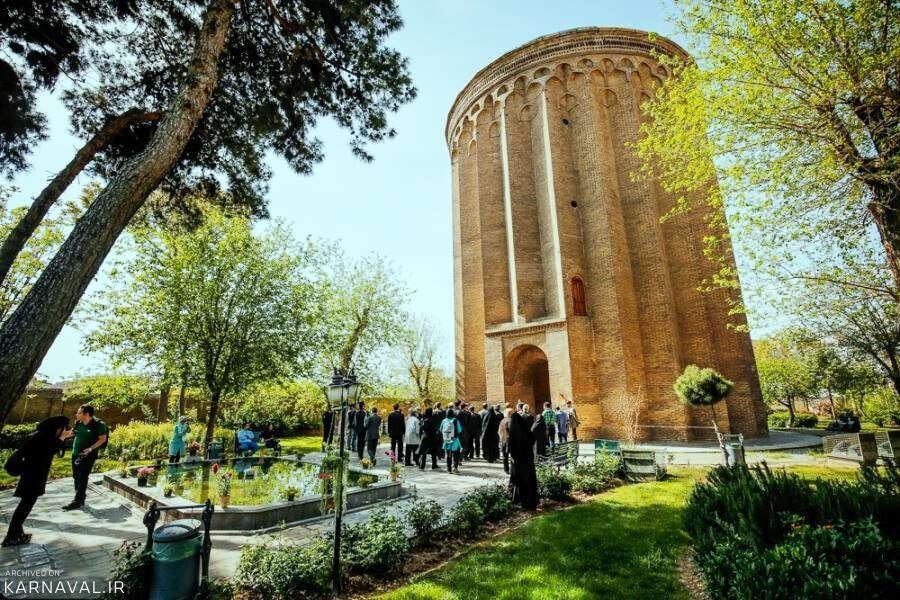12th-century tower in southern Tehran undergoes restoration

TEHRAN – Borj-e Toghrol, a 12th-century cylindrical tomb tower in the Rey neighborhood of southern Tehran, has undergone restoration by specialists.
It’s the third time that the historical tower is being restored in line with protection and strength, with the help of leading artists and craftsmen, Rey's tourism chief said on Tuesday.
Borj-e Toghrol is nearly 900 years old and is considered the oldest tower in Tehran. The monument has always been the focus of tourists due to its many uses, including a sundial, the official explained.
During the past nine centuries, due to numerous earthquakes, its dome has been destroyed, and the height of the tower has reached 20 meters, Tasnim reported.
The tower is said to serve as the mausoleum for the Seljuk king, Sultan Tughralibek, who established Rey as a major administrative center of the Seljuk Dynasty until its destruction by Mongol armies in the early 13th century.
The interior design of the tower is cylindrical, and the exterior is made up of 24 vertical angles. Two entrances in the Razi style (a form of Iranian architecture) were built on the north and south sides of the tower. The hollow structure of the tower has contributed a lot to the stability of the building.
Due to the severe earthquakes in this area, a deep and tight foundation was able to prevent the collapse. The architect of the tower built several holes in the walls to allow air circulation and prevent moisture from seeping into the walls. The walls of the tower are also acoustic. The tower used to have a roof that amplified these echoes, but it is now ruined.
As for its sundial function, there are 24 vertical angles around the outside of the tower. At the top of each angle are four and a half shapes in a circle, representing a quarter of an hour. There are also six rectangles, each showing 10 minutes, and the narrower grooves showing the minutes. It is worth noting that the tower's two east and west downspouts read three and nine o'clock, and the tower's north and south doors also read six and twelve o'clock.
Another use of the tower was to light a fire at the top of the tower, giving it the landmark function of showing the way to those coming to Rey from Khorasan on the Silk Road.
Rey was one of the capital cities of the Parthian empire (3rd century BC–3rd century CE) and it was captured by the Muslim Arabs in 641 CE. During the reign of the Muslim caliph Al-Mahdi in the 8th century, the city grew in importance until it was rivaled in western Asia only by Damascus and Baghdad.
According to Britannica, Islamic writers described it as a city of extraordinary beauty, built largely of fired brick and brilliantly ornamented with blue faience (glazed earthenware). It continued to be an important city and was briefly a capital under the rule of the Seljuks, but in the 12th century, it was weakened by the fierce quarrels of rival religious sects. In 1220, the city was almost destroyed by the Mongols, and its inhabitants were massacred. Most of the survivors of the massacre moved to nearby Tehran, and the deserted remnants of Rey soon fell into complete ruin.
AFM
Leave a Comment